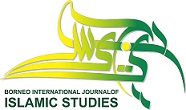Women in the Public Sphere and Religious Discourse Interpretation in the Post-Conflict Aceh
Abstract
This article aims to discuss women and their access to the public sphere after a long term of the last three decades of armed conflict in Aceh. As many occurred in the other most conflict regions, women are mostly victims of any regime policies, either in political or economic access. This article would like to elaborate more on how women's position perceived within Acehnese society in the post-conflict Aceh since 2005? Furthermore, how are religious doctrines being interpreted regarding women’s issues in the post-conflict Aceh? By combining literature reviews and interviews as the primary source of data collection, this article argues that the long army conflict in Aceh and unfortunate Aceh's current political context are the leading cause of women's position degradation in Aceh and not because of the religious interpretation contestation. Thus, even though the formal sharia implementation has taken place in Aceh since 2002, male political domination and contestation have influenced women's position degradation in contemporary Aceh's public sphere.
Keywords: Women, Post-Conflict Aceh, Sharia, Public Sphere, Religious Discourse.
References
Abou El Fadl, Khaled. Speaking in God's Name: Islamic Law, Authority, and Women. Oxford: One World, 2003.
Affiat, Rizki. "Women's Participation in Decision-Making Processes in Post-Conflict Aceh." Aceh Peace Follow Up Project. EU: Crisis Management Initiative, 2011.
Analiansyah. “Peran dan Kiprah Aktivis dan Pemimpin Perempuan Aceh Selatan pada Konflik dan Pasca Konflik Aceh”. Takammul, Vol. 6, No. 1. Januari-Juni 2017.
Banu A L Khan, Sher. “The Sultanahs of Aceh, 1641-99” in Graf, Arndt. Susanne Schroter & Edwin Wieringa. Aceh: History, Politics, and Culture. Singapore: ISEAS-Yusof Ishak Institute, 2010.
Clavé, Elsa. “Silenced Fighters: An insight into Women Combatants’ History in Aceh (17th-20th c.)”. Archipel 87. 2014.
Fadel, Mohammad. "Two Women, One Man: Knowledge, Power, and Gender in Medieval Sunni Legal Thought," International Journal of Middle East Studies, 29/2, 1997.
Feener, R. Michel. Shari'a and Social EngineeringThe Implementation of Islamic Law in Contemporary Aceh, Indonesia. Oxford: Oxford University Press, 2014.
Habermas, J. “The Public Sphere” In Mukerji, C.; Schudson, M.(Ed.) Rethinking Popular Culture. Contemporary Perspectives in Cultural Studies. Berkeley/Los Angeles: University of California Press, 1991.
Hasni, Khairul. “Post-Conflict Kekerasan terhadap Perempuan dan Perdamaian Aceh”. Lentera. Vol. 14, No. 9, Juli 2014.
Human Right Watch (HRW). “Abuses in the Application of Sharia in Aceh, Indonesia” in https://www.hrw.org/report/2010/11/30/policing-morality/abuses-application-sharia-aceh-indonesia, 2010.
Mernissi, Fatima. The Veil and the Male Elite. A Feminist Interpretation of Women’s Rights in Islam. New York: Addison-Wesley Publishing Company, 1992.
Mernissi, Fatima. The Forgotten Queens of Islam. Minnesota: University of Minnesota Press, 1997.
Mohd Nor, Mohd Roslan & Inayatillah. “Women’s Marginalization from Public Spaces: The Case of Aceh” Asian Women. Vol. 27, No. 4, 2011.
Mubarrak, Husni. “Sengkarut Syariat Atas-Bawah”. Journal Gelombang Baru. 4, 2009.
Mubarrak, Husni. “Sengkarut Hukuman Rajam dalam Rancangan Qanun Jinayat Aceh”. Jurnal Sosio Religia. Vol. 9, No. 3, 2010.
Mubarrak, Husni. "In Search of Islamic View of Justice on Women Testimony." Ijtihad. Vol. 16, No. 2, 2016.
Munir, Lukman (ed.). Menuju Revitalisasi Hukom dan Adat Aceh. Banda Aceh: Yayasan Rumpun Bambu. 2003
Nurjannah. "Women as Victims of Violence in East Aceh (A Study about the Experience of Women through Feminist Perspective)." Research on Humanities and Social Sciences. Vol. 5, No. 24, 2015.
Ocktaviana, Sentiela. Widjajanti M. Santoso dan Dwi Purwoko. “Peran-peran Perempuan di Wilayah Konflik: Antara Korban, Penyintas dan Agen Perdamaian”. Jurnal Masyarakat & Budaya. Vol. 16, No. 3, 2014.
Salim, Arskal. “Shari’a from Below” in ACEH (1930s-1960s): Islamic Identity and the Right to Self Determination with Comparative Reference to the Moro Islamic Liberation Front (MILF). Indonesia and the Malay World. Vol. 32. Issue 92, 2004.
Salim, Arskal & Adlin Sila (ed.). Serambi Mekkah yang Berubah: Views from Within, Jakarta: Pustaka Alvabet dan ARTI, 2010.
Siapno, Jacqueline Aquino. Gender, Islam, Nationalism, and the State in Aceh: The Paradox of Power, Co-optation, and Resistance. New York: Routledge Curson, 2002.
Siapno, Jacqueline Aquino. "Syari'a Moral Policing and The Politics of Consent in Aceh." Journal of Social Difference-Online. Vol. 1. December 2011.
Sjamsuddin, Nazaruddin. The Republican Revolt: A Study of the Acehnese Rebellion. Singapore: ISEAS, 2000.
Srimulyani, Eka. “Women, Micro-finance, and Income Generation after the Political Conflict and the Tsunami in Aceh." Asian Journal of Women’s Studies. Vol. 19, Issue 1, 2013.
Taylor, Reed. “Syariah as Heterotopia: Responses from Muslim Women in Aceh, Indonesia." Religions. 6. May 2015.
Wadud-Muhsin, Amina. Quran and Woman. Kuala Lumpur: Penerbit Fajar Bakti Sdn. Bhd., 1994.


.png)






